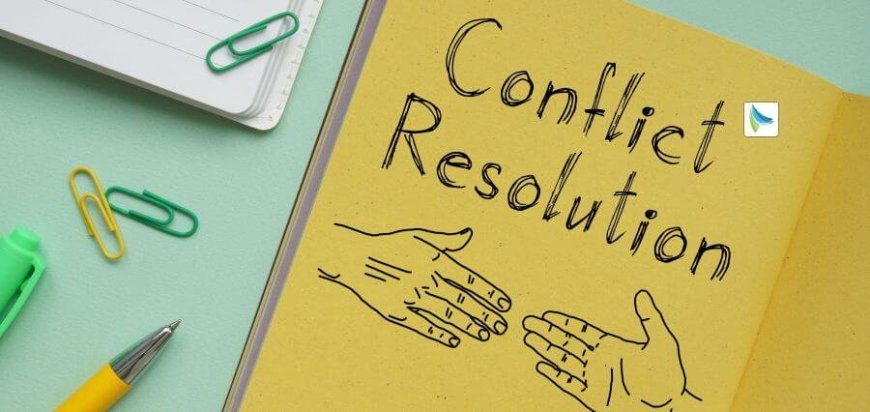Strategies for Conflict Resolution in the Workplace
Workplace conflict is very common. It may be caused due to difference of opinions, values, or interest. With the diversified work environment of today, it is very necessary to handle such conflicts properly and ensure that the atmosphere at the workplace remains cordial as well as productive. Such effective conflict resolution improves teamwork but also […] The post Strategies for Conflict Resolution in the Workplace appeared first on Insights Success.

Workplace conflict is very common. It may be caused due to difference of opinions, values, or interest. With the diversified work environment of today, it is very necessary to handle such conflicts properly and ensure that the atmosphere at the workplace remains cordial as well as productive. Such effective conflict resolution improves teamwork but also helps create a respectful and collaborative culture. There are several strategies which can be adopted for effective conflict management at the workplace.
Understanding Conflict
Before the strategies are discussed, it is crucial to understand what conflict is. Conflicts can be divided into two major types: interpersonal and organizational. The former usually occurs between people due to misunderstandings or perspectives. The latter involves larger groups or teams and can be caused by structural issues, resource allocation, or policy disagreements. Understanding the type of conflict is the first step in effectively dealing with it.
Create an Open Environment
Promotion of an open environment is one of the basic strategies for conflict resolution. If employees feel safe to express their thoughts and emotions, they will be able to address the issues before it gets worse. Leaders can encourage openness by creating a culture that welcomes and values feedback. Regular team meetings, one-on-ones, and anonymous suggestion boxes can be avenues for employees to raise concerns without fear of retribution.
Active Listening
Resolving conflict involves one of the skills in that area. This includes hearing what the other person is saying, but it is not just that; it means trying to understand their perspective. During the process of active listening, people can be shown empathy and validate the feelings of others. This will therefore open up and may really reduce defensiveness during a discussion. One has to paraphrase what the other person says in a discussion to show that one has understood them, as well as to show that one values their views.
Collaborative Problem Solving
Another powerful strategy for conflict resolution is collaboration. This approach focuses on work together in order to find a solution to satisfy all parties involved. Collaborative problem solving encourages individuals not to see the conflict as a win-lose proposition but as an opportunity for personal growth and teamwork. It facilitates brainstorming sessions where creative solutions can be generated in line with different viewpoints of ownership by team members.
Establish Clear Policies
A clear, defined conflict resolution policy can be an essential guide toward behavior and expectations in the workplace. There should be explicit policies on such steps to take in case a conflict emerges, as well as who in management/employees is to do what and when regarding conflict resolution. A framework can help regulate disputes more systemically and will ensure all conflicts are approached fairly and consistently.
Mediation
Mediation comes in handy once the conflicts become very demanding. Mediation is a form of bringing in a third neutral party to facilitate discussion about the parties in conflict with one another. This facilitator will help explain and uncover issues and discover underlying interests or needs that may have been hidden along the way, creating fair means of communication. The moderator leads the discussion to enable parties to air their views while working towards a common solution.
Training and Development
Investment in conflict resolution training courses will make employees learn how to resolve conflicts. Such courses will cultivate the ability to handle the disputes appropriately in the skills of communication, emotional intelligences, and negotiation qualities of people. Training for diversity awareness helps build the good understanding between members in teams, hence an essential approach to preventing conflict caused by culture.
Develop Team Building
Team-building activities can significantly reduce the likelihood of conflicts arising in the first place. These allow team members to bond and understand each other’s strengths and weaknesses in a relaxed setting. As they grow closer, they are likely to approach conflicts with a cooperative mindset rather than a confrontational one. The activities may include problem-solving exercises or social events that encourage interaction and collaboration outside the typical work environment.
Encourage Reflective Activities
Interpersonal interaction in a work setting may be one of the triggering aspects of a conflict prior to its eruption. Encouraging workers to cease and reflect on their involvements would mean more composed conversations. Such a routine would prevent potential friction sparks from causing conflicts. Discussion with friends, people, and even groups can encourage reflection. Monitoring and Follow-Up
Once a conflict has been resolved, it is important to track the situation and check in with the parties involved. Check-ins can be helpful in ensuring that the resolution is holding and that there are no residual issues. Showing an interest in the continuation of support will reinforce the importance of healthy communication and conflict resolution. This proactive approach builds trust and encourages employees to be more open in future discussions.
Conclusion
In a nutshell, very successful dispute resolution strategies are very important to ensure that the workplace is conducive and productive. The understanding of the nature of conflicts and application of such practices as the open environment approach, active listening, collaboration, among others, has brought a big difference in organizational dispute handling. This becomes more potent when employees are exposed to conflict resolution training; teamwork is encouraged, and clear policies are in place. Finally, a proactive and thoughtful approach to conflict resolution not only minimizes disruptions but also fosters a culture of respect and cooperation, leading to better overall workplace dynamics.
The post Strategies for Conflict Resolution in the Workplace appeared first on Insights Success.











































